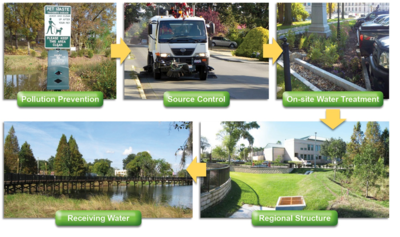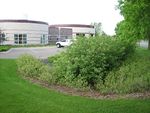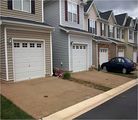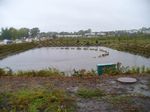
Difference between revisions of "Structural stormwater Best Management Practices"
m |
m |
||
| Line 8: | Line 8: | ||
#[[Bioretention]] ([[Bioretention combined|+]]) | #[[Bioretention]] ([[Bioretention combined|+]]) | ||
##Rain garden: see [[Bioretention]] | ##Rain garden: see [[Bioretention]] | ||
| − | #[[Infiltration | + | #[[Infiltration]] (infiltration trench, basin, dry well, and underground infiltration) |
| − | |||
#[[Filtration]] ([[Filtration combined|+]]) | #[[Filtration]] ([[Filtration combined|+]]) | ||
##[[Dry swale (Grass swale)]] | ##[[Dry swale (Grass swale)]] | ||
Revision as of 13:32, 27 November 2019
A structural stormwater Best Management Practice (BMP) is defined in the MS4 General permit as "a stationary and permanent BMP that is designed, constructed and operated to prevent or reduce the discharge of pollutants in stormwater".
- Green roofs (+)
- Permeable pavement (+)
- Trees
- Bioretention (+)
- Rain garden: see Bioretention
- Infiltration (infiltration trench, basin, dry well, and underground infiltration)
- Filtration (+)
- Iron enhanced sand filter (Minnesota Filter) (+)
- Stormwater ponds (+)
- Stormwater wetlands (+)
- Hydrodynamic devices
- Filtration devices
- Chemical treatment
- Modular treatment wetlands for stormwater management
To view all pages for a particular BMP, click on "+"
- Examples of structural BMPs.





